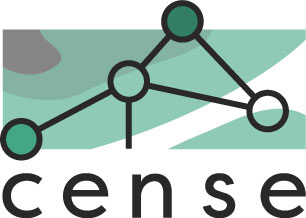The elements of this page are licensed under the Creative Commons Attribution 4.0 International License (CC-BY-SA 4.0). See legal notices for more information.
Description
Urban noise: a major environmental issue
The reduction of the noise exposition represents both societal and environmental concerns, in particular for cities that are subjected to a multitude of noise sources and that count de facto numerous exposed people. In this context, noise mapping is acknowledged as a relevant tool to diagnose urban sound environments, to propose action plans to reduce noise annoyance, as well as to communicate with city dwellers. Nowadays, noise maps are essentially elaborated by means of numerical simulations, with high spatial precision, from a census of road traffic noise sources, followed by a sound propagation modelling. However, this method has some well-known limitations especially concerning the inaccuracy of input data, the simplified emission and propagation modelling, and, lastly, the inadequacy of classical output noise indicators to describe the perceived sound environments. In parallel, noise observatories have been deployed in some cities, which give access locally to the temporal variations of the real sound levels, but entail high operational costs that forbid their dense deployment, limiting the number of observations point to few units.
Cense: dealing with quality of input data and uncertainties of output data
In addition, the project will focus also on the quality of the input data that are required for the modelling, since they define the accuracy of the output noise indicators. Two aspects will be developed, the first concerning the optimization and improvement of the quality of input data, the second on the estimation of uncertainty of the output data, from the input ones. This work, based on uncertainty propagation approaches, constitutes here again a major breakthrough. Indeed, the information on the accuracy of output data from noise prediction models is currently totally missing, which can have an impact on the development of solutions to reduce noise annoyance.
Cense: include GIS in the methodology core
Lastly, because the management of geo-localized data is central to the project, the development of an integrative geographical information system (GIS) platform constitutes an important task, in order to facilitate the data accessibility (inputs/outputs, measured/simulated), its reuse and its exploitation to build new thematic noise maps.
Cense: a new methodology for a better assessment of urban soundscapes
Given the recent developments in noise measurement technologies and computational methods, it now seems possible to combine these two approaches in order to benefit from the advantages of each method. This would be a significant advance in the development of predictive noise models, and would open many opportunities for assessment and improvement of urban soundscapes.
So, the CENSE project aims at improving the characterization of urban sound environments, by combining in situ observations and numerical noise predictions. The project relies on data assimilation techniques, which have never been developed in the environmental noise context yet, in order to take profit of both modelling and measurements advantages. The proposed approach constitutes an important breakthrough in the environmental noise domain and is made possible thanks to the recent affordability of wide deployment of low-cost noise sensors. Particularly, in the context of CENSE project, the deployment of a mixed wired/wireless sensor network, connected to the cloud through a public street lamp network (as a power-line communication based system), constitutes an innovative technical approach.
Cense: produce perceptive noise maps
The CENSE project will also propose an original approach to produce perceptive noise maps, by developing soundscape models that rely on the automatic identification of noise sources, based on models that have never been used for urban noise mixtures.

